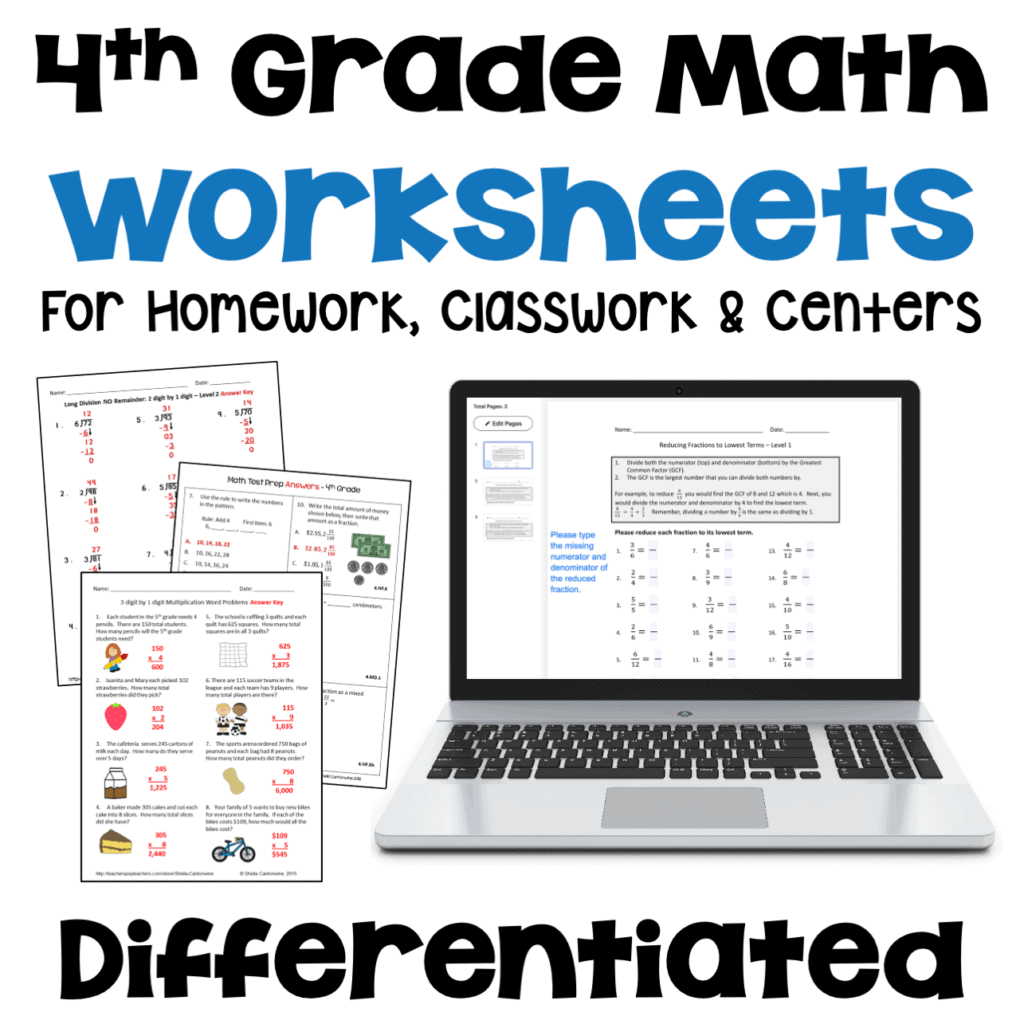Using worksheets for 4th-grade math is very easy to do. Students are used to these and they can either work on them as a printable or in a digital format. Once you decide how you are going to differentiate your class, all you do is print and go or you can assign them online digitally. Then you can easily reach all your 4th-grade math students with differentiated worksheets.
These differentiated resources are great because students can use the level 1 worksheet which is the easiest, the level 2 which is a little more challenging, and/or the level 3 which has the most difficult questions.
Here are examples of how the 3 levels would work for Comparing and Ordering Decimals Worksheets. Although the questions for each level are different, each page has a helpful grey box on the top of the page. This gives the student helpful hints on how to compare and order decimals.
Level 1 Worksheets – Easiest Questions
Here is an example of a level 1 worksheet for comparing and ordering decimals. The numbers for comparing decimals are very small and students only need to look at the tenth place to be able to compare. In ordering the decimals, students only order 3 numbers and all of them are relatively small. Again the student only needs to look at the tenth place to be able to correctly order these numbers.
These are the easiest questions of the 3 levels and will help students practice the basic skills before moving on to more challenging questions.
Level 2 Worksheets – More Difficult Questions
For the level 2 worksheets, the questions are slightly more difficult. For example, when comparing the decimals, students will have questions with decimals with the hundredths place.
For ordering the decimals, some of the questions have 4 decimals to order and they will be looking at the ones, tenths, and hundredths places. These are more difficult than the level 1 questions and some students might even be able to start with these questions.
Level 3 Worksheets – Most Challenging Questions
The level 3 questions are the most challenging questions. The numbers to compare are more challenging in the first section. For example, 24.0 = 24 and 14.61 > 14.6 could be a little confusing and a challenge for some students.
When ordering decimals for level 3, students could order as many as 5 numbers with some of them really similar. For example, ordering the numbers 9, 9.9, 9.99, 8.99, and 9.1 could really challenge your students.
Differentiation Made Easy
The beauty of using these resources is that they are already differentiated for you. You can reach all your students without having some students struggling and overwhelmed while others are bored and ready to move on.
Here is what one teacher had to say about these worksheets:
“This was great for differentiation. It helped build my lower students up to performing the at grade level tasks. It also gave my gifted students more of a challenge instead of staying bored.”
Teachers Pay Teachers Product Listing
If you need more help in learning how to differentiate in your 4th-grade math class, check out my blog post on 3 Easy Ways to Differentiate Math Instruction for 4th Graders.





